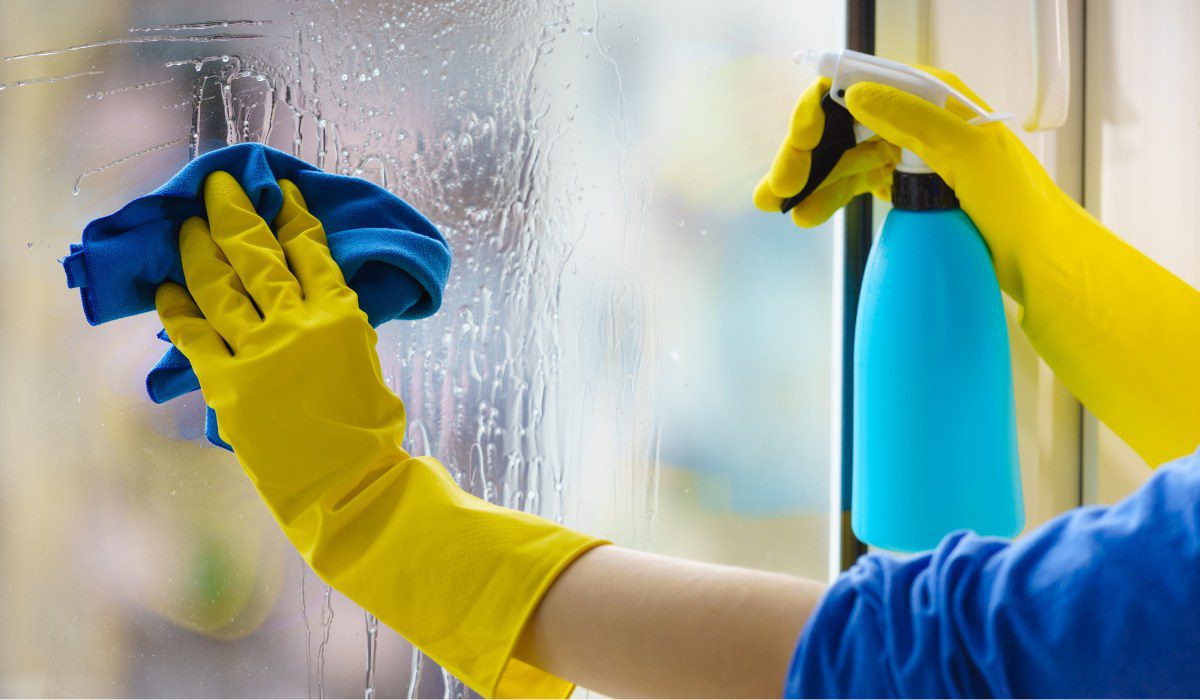The cleaning and maintenance of windows is often overlooked by homeowners unless the signs of dirt or ill-repair become very evident. However, the more you sleep over the cleaning of your windows, the more difficult they get to clean. So letting dirt accumulate on windows until it cannot be ignored anymore is never a wise choice. To avoid unnecessary hassles during the window-cleaning process, it becomes important to get them cleaned at the right time. In this article, we will discuss some telltale signs to help you figure out when it is time to clean your windows.
See also: Glass for Windows: Types and advantages
Obvious dirt or streaks
Windows are prone to the accumulation of dirt, smudges or streaks, especially in high-traffic areas or homes located near busy streets. Such marks are generally results of fingerprints, pet nose prints, or cleaning attempts with improper methods. They are especially noticeable when sunlight hits the spot, causing the aesthetic appearance of your windows to diminish.
Dull appearance
It is normal for a layer of grime to develop on the glass over time, even if there are no active sources of dirt around the windows, thereby reducing its ability to let in natural light. This layer is a mix of dust, pollen particles, or residues from rain. The dullness affects not only the view from the window but also the overall ambiance of the room, making it feel dimmer and less inviting.
Water spots or mineral deposits
Rainwater or sprinkler overspray can leave water spots on your windows. If your region’s water supply is hard, then you might also notice mineral deposits, making the water spots more evident. Over time, these stains get etched more and more into the glass, making them tougher to remove, resulting in a cloudy, neglected look for the surface.
Obstructed view
If you notice the view of the outside getting blurry or distorted, it is likely due to a buildup of dirt, smog or grime on the glass. This is especially noticeable during sunrise or sunset, especially when light hits the window at a particular angle that reveals the layers of dirt.
Dusty or dirty frames and sills
Not only the glass, but the frames and sills of windows are also prone to collecting dust, pollen and debris over time. In humid environments, mould and mildew growth can also be an issue, resulting in an overall unhealthy environment. Alongside being a sign that your windows need cleaning, dirty frames and sills can also lead to functional issues, such as sticking or difficulty in opening and closing the window.
Sticky residue
If you had stickers, tape or labels on your windows in the past, the leftover adhesive might have left a sticky residue that attracts dirt. The longer you let the residue rest, the harder it gets to clean, thereby making the window appear patchy or grimy.
Cobwebs or bugs
Windows in low traffic areas also have their share of dirt accumulation. Such windows often tend to attract spiders, leaving behind cobwebs. Insects might also gather around the windows to leave droppings, smudges, or even small carcasses. Not only do these look unsightly, but can also affect the cleanliness of the area around the window.
Condensation or fogging
Excessive and frequent condensation or fogging on the interior of windows might indicate a dirty surface. Accumulated dirt attracts moisture from the air, which then condenses and leaves streaks or watermarks behind. Additionally, persistent fogging might also signal a broken seal in double-pane windows, causing dirt to get trapped inside the panes.
Seasonal dirt buildup
Each season leaves its mark on your windows. Spring generally brings pollen, summer adds dust and bug splatter, fall leaves residue from decaying leaves, and winter contributes salt, grime and other stains. Giving your windows a clean-up after each season can go a long way in keeping them looking fresh.
Deteriorating window treatments
Take a look at the curtains, blinds or shades near your windows. If they appear dusty or discoloured, there is a high chance that your windows are dirty as well. Dirt and grime tend to transfer from the windows to your treatments, and vice versa, creating a cycle of dirtiness.
FAQs
How do I know my windows need cleaning if obvious dirt is not visible?
Look out for subtle signs like reduced light entering the room, dull or hazy appearance, or sticky residue from environmental pollutants in the absence of visible dirt on windows.
How can I prevent water spots on my windows?
The mineral deposits left behind due to dried water on glass can be prevented by a water-repellent treatment and keeping sprinklers away from glass.
Why does my view look blurry even after cleaning my windows?
Blurry view can be caused due to a film of grime or residue that was not fully removed during cleaning, or due to issues like condensation between panes.
Are cobwebs and bugs near my windows a sign of a bigger problem?
Cobwebs and bugs around windows are indicative of gaps or cracks, especially in the case of windows in low-traffic areas that are often neglected.
Why do my window sills and frames get dirtier than the glass?
Window sills and frames are more prone to catch debris like dust, pollen, rainwater runoff and outdoor grime than the glass and require frequent cleaning.
How often should I clean my windows to avoid these signs?
It is recommended to clean windows at least twice a year, preferably at the beginning of the season. Areas with harsh exterior conditions might call for more frequent cleaning.
Can dirty windows impact the energy efficiency of my home?
By blocking natural sunlight, dirt and grime can reduce the amount of light entering your home during cooler months, increasing reliance on artificial lighting.
| Got any questions or point of view on our article? We would love to hear from you. Write to our Editor-in-Chief Jhumur Ghosh at jhumur.ghosh1@housing.com |







